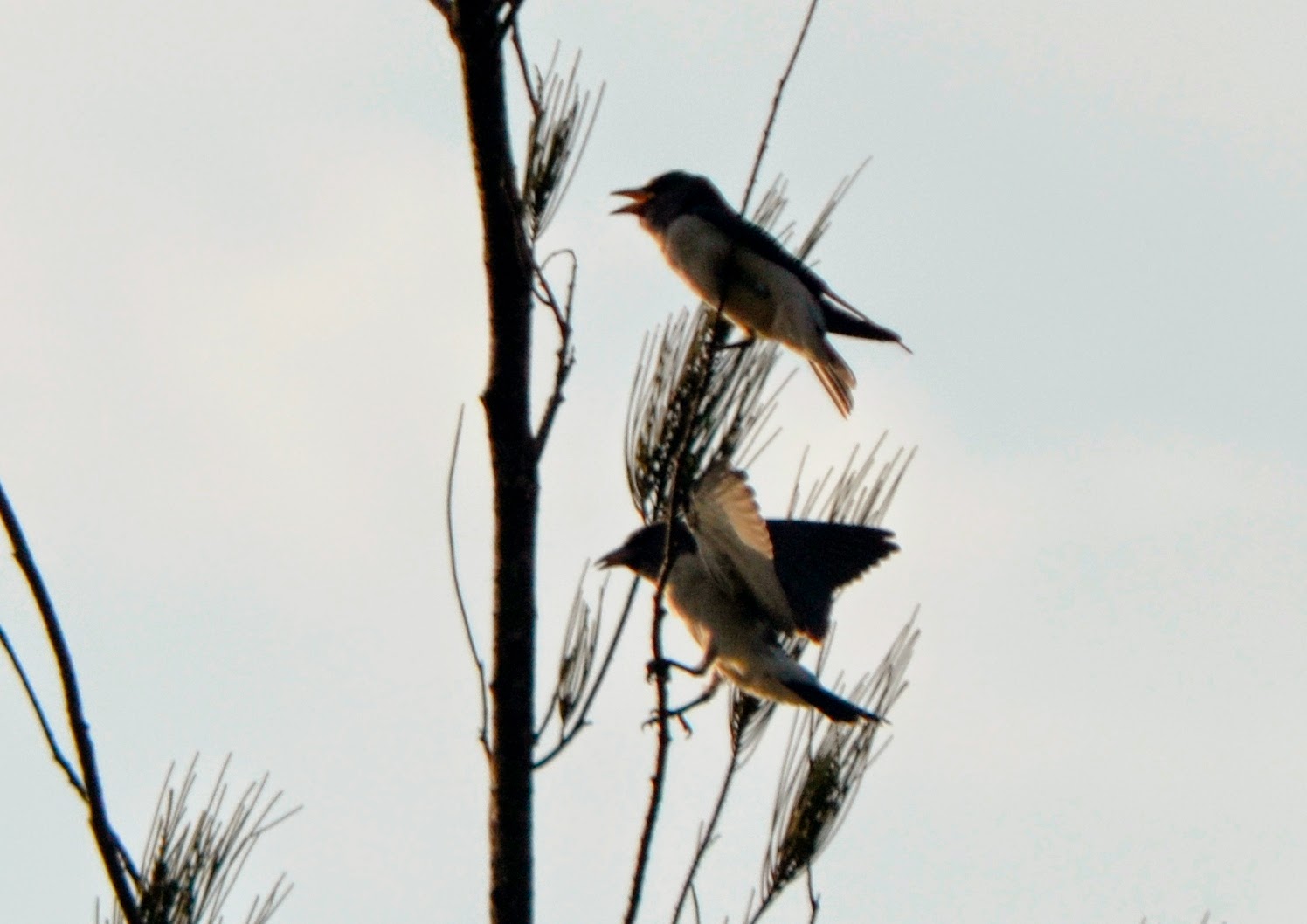 |
| Eastern Crimson Sunbird (Aethopyga siparaja) |
 |
Eastern Crimson Sunbird - female
in delightful mood |
Most fortunate today to come across the female Eastern Crimson Sunbird. It was seen flirting around with the male among the branches. Suddenly it perched above me. I swung my camera and got the female in happy mode. Slightly later I waited patiently for the Little Spiderhunter at the yellow ixora bush. It too was in a delightful mood. It enjoyed taking the nectar from the ixora flowers. The moment she saw me in clear sight she made one last call and off she went.
Time : 9.30 - 10.30 am, Location: Zone C
 |
| Little Spiderhunnter (Arachnochera longirostra) |




















































